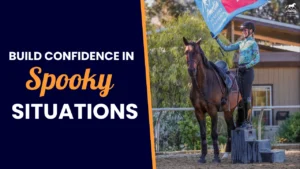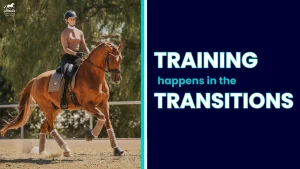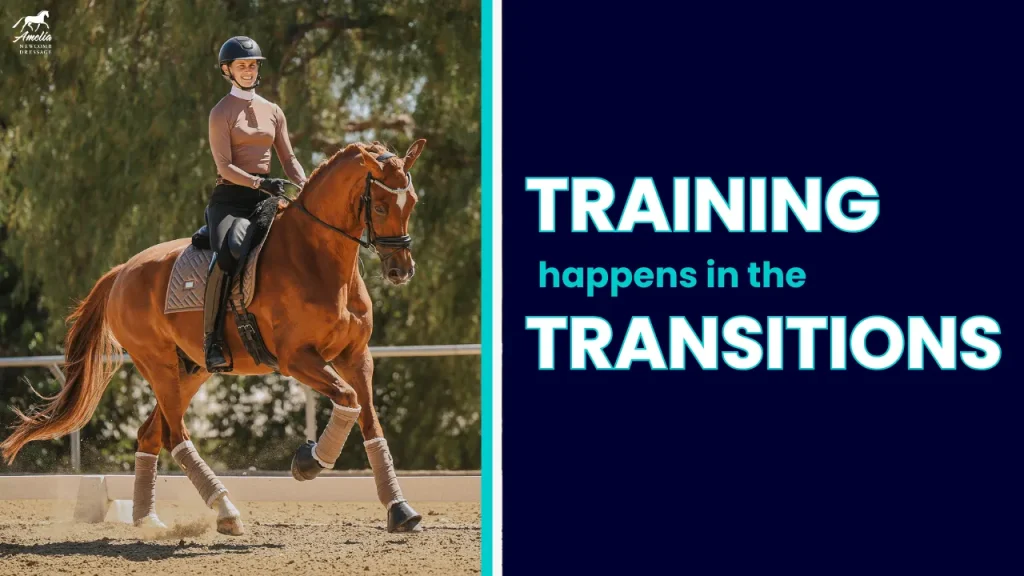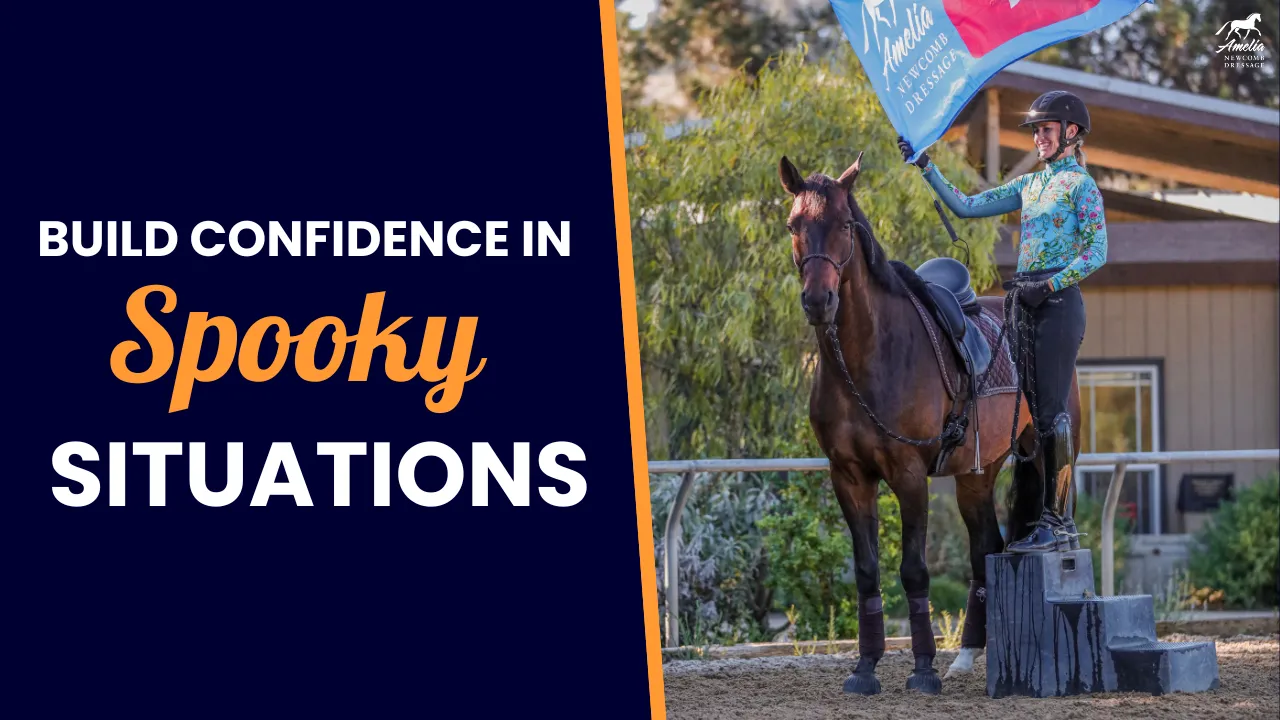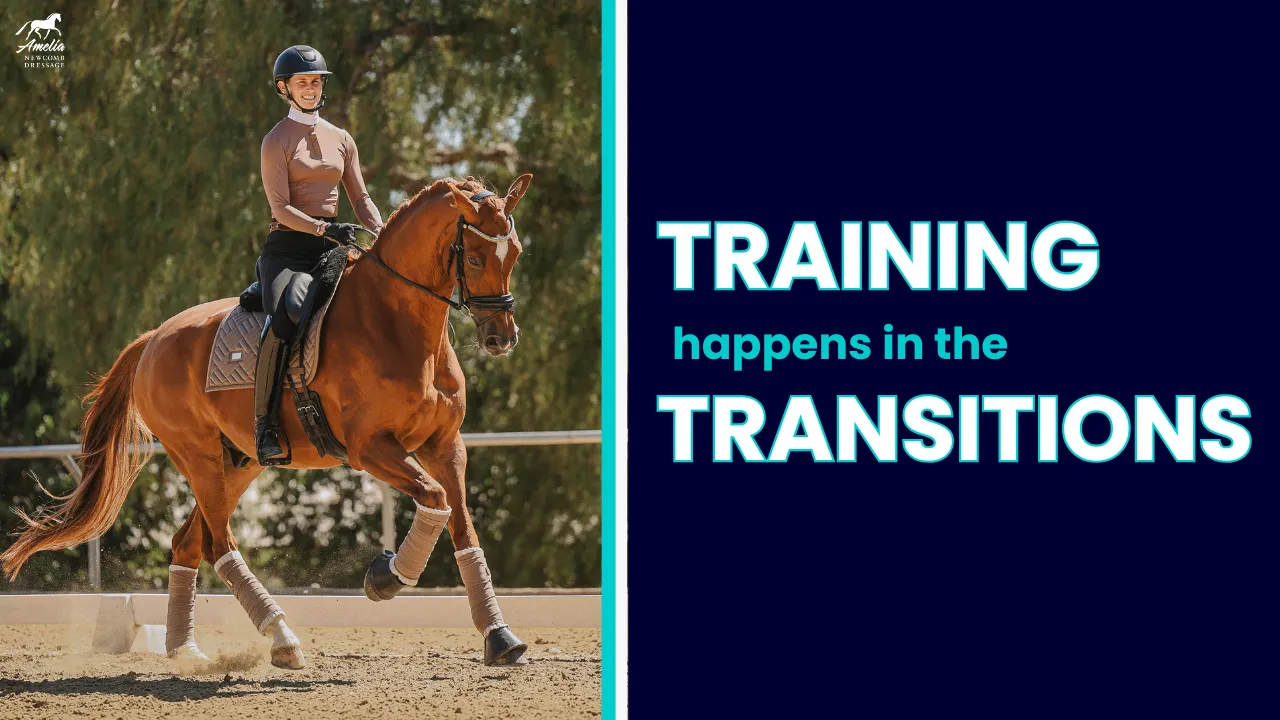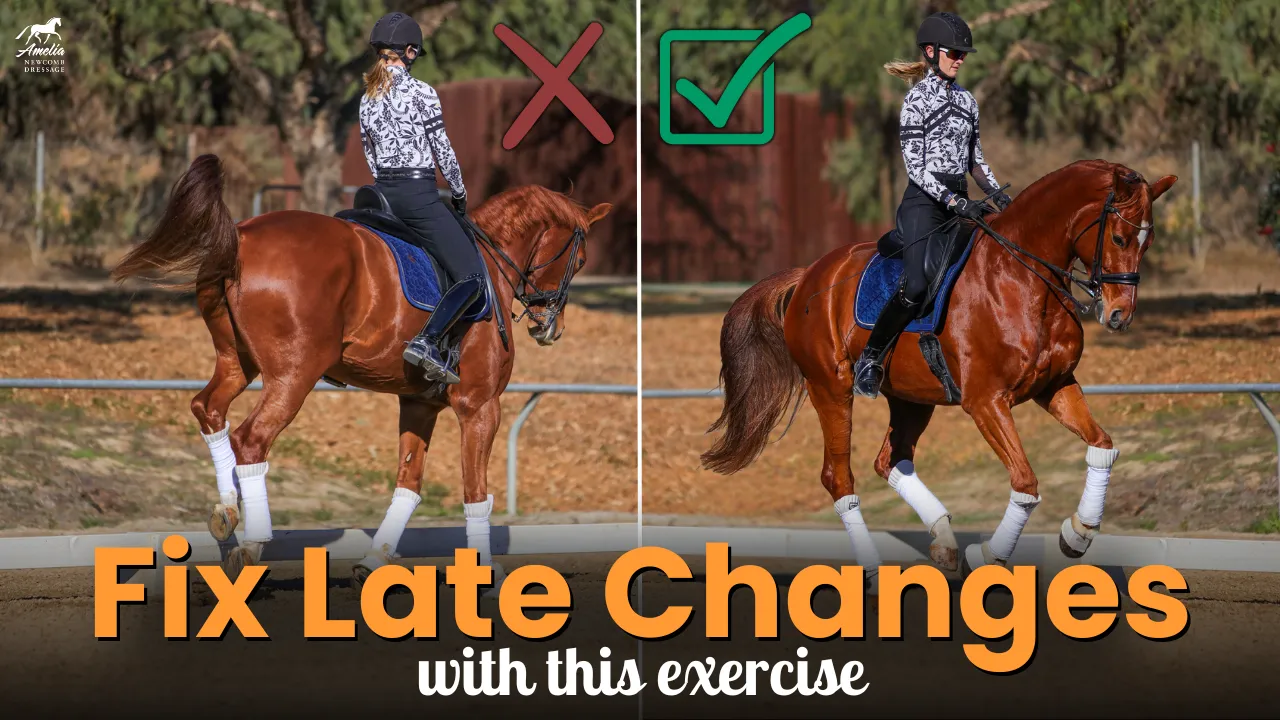The trot- canter transition is one of the most difficult transitions to ride well. The snowman is the perfect exercise to help you with your trot-canter transitions and it is a fun way to work on them!
In this week’s video, I’m teaching my student Sylvia on Mercurio, and she uses the snowman exercise to improve her trot-canter transitions. It is only her third time riding him, and I thought that this was a good example of how to use the snowman to help a new or hot horse when you are working on your trot-canter transitions.
To begin the snowman, start at X and ride a small 10m circle at trot. Then, when you get back to X, change direction and make a transition to canter onto a large 20m circle. Want more details on how to ride the snowman exercise? Check out the link here:
Though the canter aids are the same for every horse (inside leg on at the girth, outside leg behind the girth) the amount of pressure you put on with your inside leg and how much you support with your outside leg is different for every horse. It may even need to be different for the left and right leads.
As you are watching, take note of the differences between Mercurio’s canter left versus right. One side is definitely easier for both horse and rider, but it is great to watch how Sylvia handles any miscommunications that come up. She stays so nice and quiet, breathes, keeps her hands down, and stays focused.
It is important to stay calm and quiet during any miscommunication, especially when you are riding a new or hot horse. Breathe and remain focused, wait until both you and the horse are reorganized, half halt, and then try your ask again. It also helps to focus on keeping a steady tempo and contact while reorganizing, especially if you have a hot horse.
Again, don’t rush into the transition from trot to canter! Taking the time to reorganize and figure out the exact aids your horse needs will help set you up for better transitions. Communication is key to a happy horse and rider!
Hope this video helps you and your horse find better communication during those trot-canter transitions! I also have a free PDF on the canter if you need more help.

